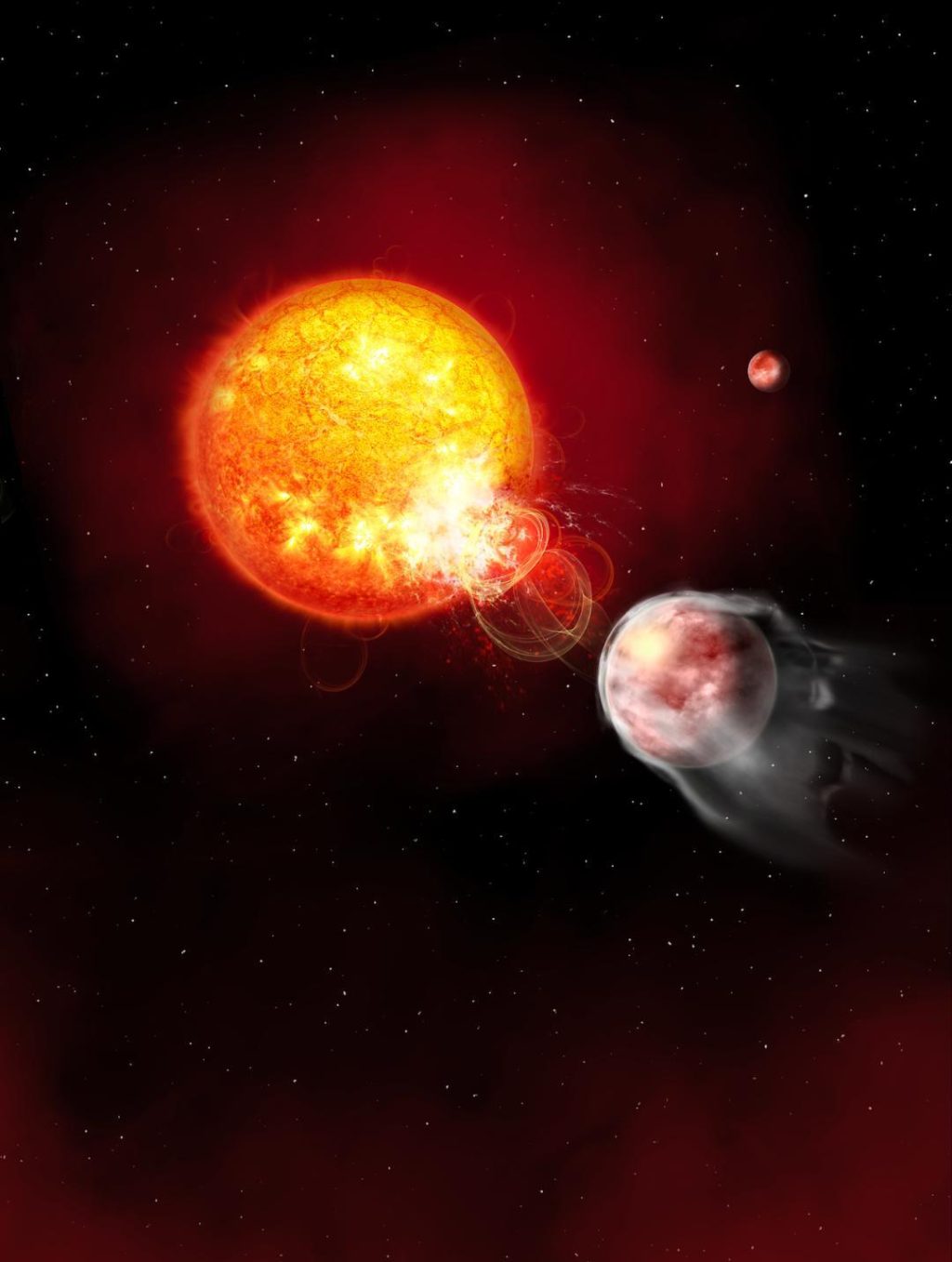
Astronomers Discover a Planet Which is Forcing its Star to Explode
In a groundbreaking discovery, astronomers have found a planet that is orbiting extremely close to its star, causing the star to go through a series of explosive eruptions. The planet, known as HIP 67522 b, is roughly the size of Jupiter and completes an orbit around its star in a mere seven days. This incredibly tight orbit is disrupting the magnetic field of the star, leading to the blasting eruptions.
HIP 67522 b is a gas giant planet, similar to Jupiter in our own solar system, but with a few key differences. While Jupiter takes about 12 years to complete an orbit around the Sun, HIP 67522 b takes a mere seven days to orbit its star. This extremely close orbit is causing chaos in the star’s magnetic field, leading to the explosive eruptions.
The discovery was made by a team of astronomers using data from NASA’s Transiting Exoplanet Survey Satellite (TESS). The team analyzed the star’s light curve, which is a graph that shows the changes in brightness over time, to identify the planet’s presence. By analyzing the star’s light curve, the team was able to determine the planet’s size, mass, and orbital period.
The star at the center of this system is a relatively small and cool star, known as a red dwarf. Red dwarfs are the most common type of star in the universe, but they are also much cooler and less massive than the Sun. Despite their small size, red dwarfs are incredibly long-lived, with some lasting for tens of billions of years.
The explosive eruptions caused by HIP 67522 b are not unique to this system. Other planets have been found to cause similar disturbances in their stars’ magnetic fields, leading to explosive events. However, the extreme closeness of HIP 67522 b to its star makes it a particularly interesting case.
The discovery of HIP 67522 b provides valuable insights into the complex interactions between planets and their stars. The planet’s close orbit is causing a phenomenon known as stellar flaring, which is a sudden increase in the star’s brightness due to the release of magnetic energy. This energy is released in the form of high-energy radiation and particles, which can have a significant impact on the star’s surroundings.
The implications of this discovery are far-reaching. For one, it provides evidence that planets can have a significant impact on their stars’ evolution. The explosive eruptions caused by HIP 67522 b may ultimately lead to the star’s death, as the constant barrage of magnetic energy could strip away the star’s outer layers.
The discovery of HIP 67522 b also raises questions about the potential for life on other planets. While the star is much cooler than the Sun, it is still possible that life could exist on a planet with a similar temperature range. The possibility of life on a planet that is forcing its star to explode is a fascinating one, and it highlights the need for further study of exoplanet systems.
In conclusion, the discovery of HIP 67522 b is a groundbreaking find that provides insights into the complex interactions between planets and their stars. The planet’s close orbit is causing explosive eruptions in its star, which could ultimately lead to the star’s death. The implications of this discovery are far-reaching, and it highlights the need for further study of exoplanet systems.
Source:






